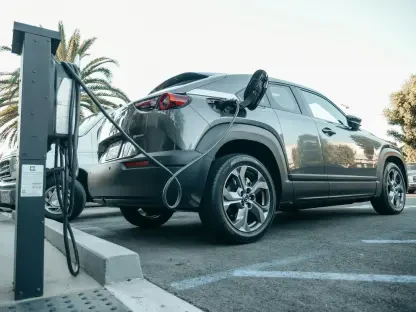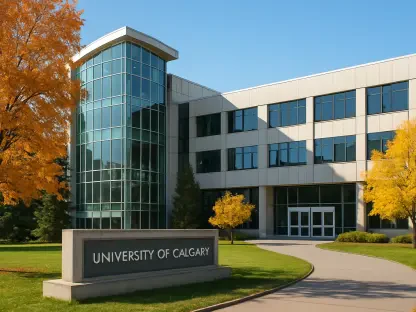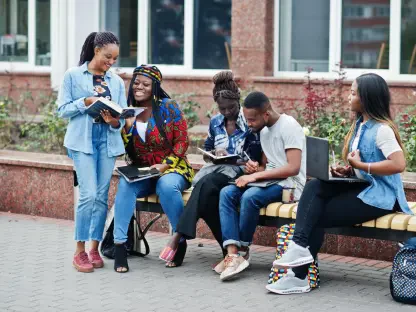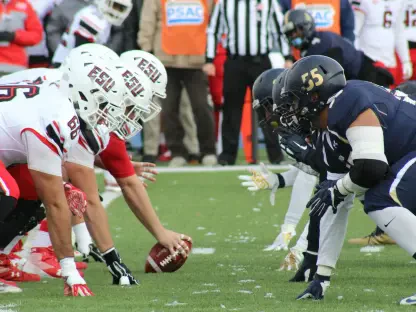What happens when a classroom lesson becomes the spark for a lifelong career? Picture a high school student, disengaged and unsure of the future, suddenly finding purpose through a virtual chat with a software engineer. This isn’t a distant dream but a reality unfolding in schools across the nation. Career-connected learning (CCL) is revolutionizing education by linking academic content to real-world job opportunities, igniting curiosity and equipping students with tools for success. This transformative approach is reshaping how middle and high schoolers view their studies, making every lesson a stepping stone toward a meaningful career.
The significance of this shift cannot be overstated. In an era where the job market evolves rapidly, traditional education often falls short in preparing students for what lies ahead. CCL bridges that gap by embedding career awareness and skills into K-12 classrooms, ensuring that learning isn’t just about grades but about readiness for life. With engagement identified as a key driver of academic achievement, this strategy offers a lifeline to students who struggle to see relevance in their daily lessons. Exploring how CCL works and why it matters reveals a path to equity, motivation, and workforce preparation.
Why Education Must Reflect Real-World Demands
In many classrooms, students grapple with a nagging question: how will this material ever apply to their lives? This disconnect between school and the outside world often dampens enthusiasm and leaves graduates unprepared for professional challenges. Career-connected learning steps in as a game-changer, integrating career exploration into everyday education to show the practical value of subjects like math or history. By aligning lessons with tangible job paths, it transforms abstract concepts into concrete possibilities, fostering a sense of purpose among learners.
This approach also tackles the pressing issue of workforce readiness in a competitive economy. As industries demand a blend of technical expertise and soft skills, students need early exposure to these expectations. CCL ensures that young minds aren’t just absorbing facts but are also developing critical abilities like teamwork and problem-solving, directly linked to career success. Such relevance can turn apathy into ambition, setting the stage for a smoother transition from school to employment.
Addressing the Critical Gap in Today’s Schools
The urgency for career-connected learning stems from a stark reality: many students face an uncertain future without clear guidance on career options. Traditional curricula, while foundational, frequently lack the practical focus needed to prepare middle and high schoolers for evolving job landscapes. Statistics paint a compelling picture—93% of educators believe engagement is vital for academic success, yet countless students remain disconnected from their studies due to a lack of real-world context.
CCL offers a solution by directly tying classroom content to professional pathways, making education a purposeful journey rather than a series of unrelated tasks. This method not only boosts motivation but also addresses equity, ensuring all students, regardless of background, gain access to insights about viable careers. With workforce trends shifting rapidly, embedding career awareness from an early age becomes a necessity to level the playing field and build confidence.
Moreover, the impact of this gap extends beyond individual students to the broader economy. Unprepared graduates often struggle to meet employer needs, creating a mismatch that hinders growth. By prioritizing CCL, schools can cultivate a generation ready to contribute meaningfully, aligning educational outcomes with societal demands for skilled, adaptable workers.
Key Elements Driving Career-Connected Learning
At its core, career-connected learning is built on a dynamic framework that reimagines student engagement through relevance. One pillar is career exploration woven into daily lessons, using tools like job fairs and virtual industry talks to highlight the purpose behind academic content. Data underscores the effectiveness—88% of students participate in at least one CCL activity, with mentorship programs doubling engagement rates from 16% to 37%, proving the value of these initiatives.
Another essential component is skill development, focusing on employability traits alongside traditional knowledge. Programs emphasize competencies such as communication and critical thinking, which are as crucial as technical expertise in today’s job market. Partnerships with local businesses further enrich this model, offering hands-on experiences through micro-internships or job shadowing that make theoretical learning tangible and impactful.
The measurable outcomes of these elements are striking. Students involved in mentorships report a 40% increase in hope for their futures compared to 25% for those without such opportunities. This boost in outlook illustrates how CCL reshapes attitudes, turning education into a launchpad for ambition and achievement rather than a mere obligation.
Expert Perspectives and Inspiring Stories
Insights from leaders in education highlight the transformative power of connecting learning to careers. Dr. Angie Haro, EdD, Director of Technology Services at Education Service Center Region 19 in Texas, emphasizes, “Linking education to professional paths isn’t just motivating—it’s essential for building student confidence and workforce readiness.” Her nearly two decades of experience underscore the role of technology in scaling CCL, with platforms enabling virtual interactions that bring industry voices directly into classrooms.
Real-world examples add depth to these expert views. Consider a high school student who, after a virtual mentorship with a tech professional, shifted from indifference to pursuing a degree in computer science. Such stories reveal how personal connections can ignite passion and direction, turning vague aspirations into actionable goals. These individual transformations reflect a broader potential for systemic change in how education prepares young people.
Surveys further reinforce this momentum. A superintendent noted in a recent report that 99% believe engagement is a top predictor of school success, a metric directly enhanced by CCL initiatives. These combined voices—from data to personal narratives—paint a vivid picture of an educational approach that resonates deeply with students’ needs and aspirations.
Actionable Ways to Integrate Career Learning in Schools
Implementing career-connected learning doesn’t demand a complete system overhaul; it begins with targeted, practical steps. Schools can start by hosting employee spotlights, where professionals share their journeys, helping students envision diverse career trajectories. These sessions demystify various fields, showing how subjects learned today apply to roles in marketing, engineering, or healthcare.
Digital tools also play a pivotal role in making CCL accessible. Platforms supported by organizations like the Association for Career and Technical Education allow students to build digital portfolios, tracking skills like problem-solving and earning badges for achievements. Additionally, virtual interaction systems connect classrooms with experts worldwide, ensuring even rural or under-resourced schools gain exposure to industry insights without geographic barriers.
Another effective strategy involves partnering with local businesses for challenge-based projects. Tasking students with solving real issues—such as creating a sustainability plan for a nearby company—merges critical thinking with practical application. These initiatives not only make learning relevant but also build confidence, equipping young learners with skills they can carry into any professional setting.
Reflecting on a Path Forward
Looking back, the journey of integrating career-connected learning into education showed a remarkable shift in how students engaged with their studies. Classrooms that once felt like isolated bubbles had become vibrant hubs of possibility, where lessons directly linked to future careers. The stories of transformed students and the data backing increased motivation painted a clear picture of success that reshaped countless lives.
Moving ahead, the focus turned to scaling these efforts, ensuring every school could adopt practical strategies like virtual mentorships and business partnerships. Educators and policymakers were encouraged to prioritize resources for digital tools that democratized access to career insights. By sustaining this momentum, the vision of an education system fully aligned with workforce needs grew closer, promising a future where every student stepped confidently toward their dreams.









